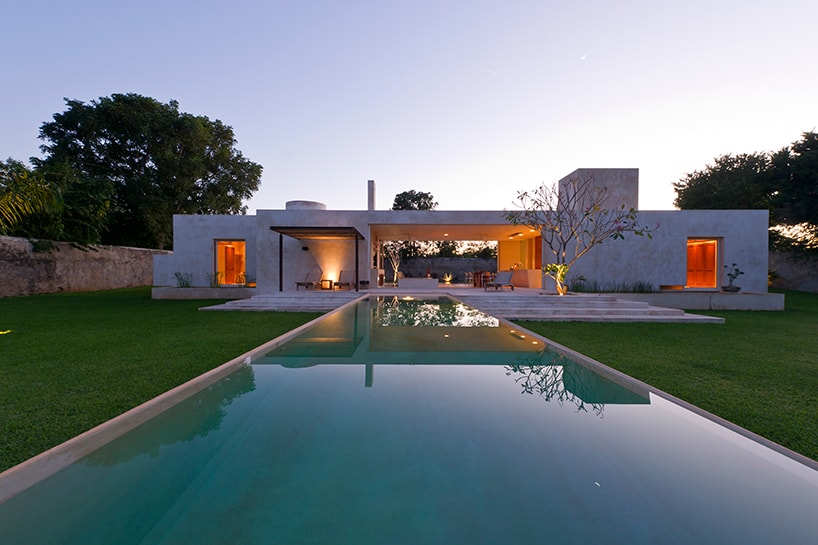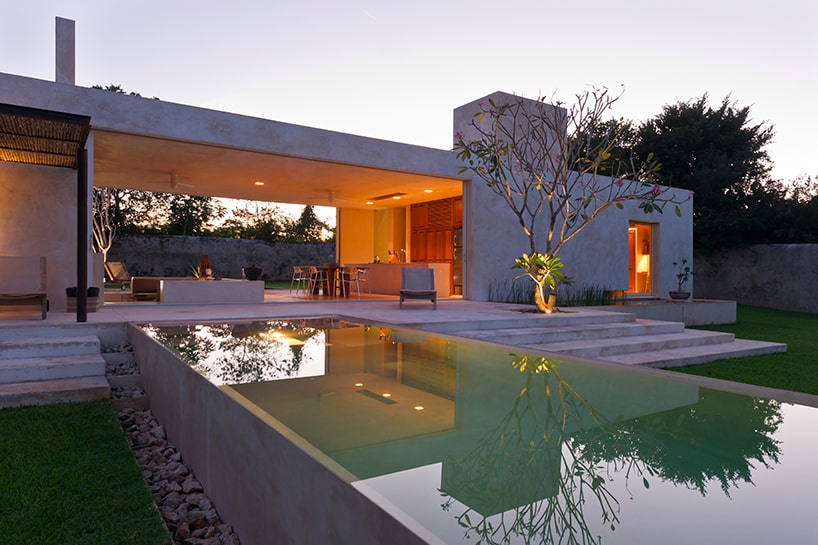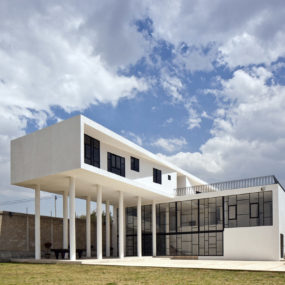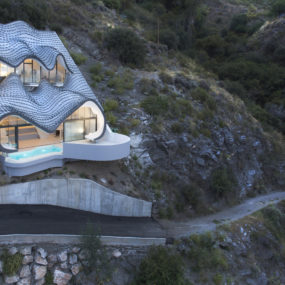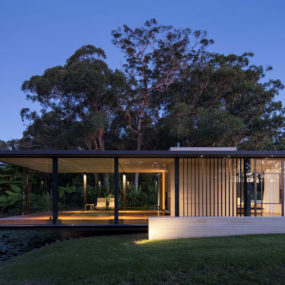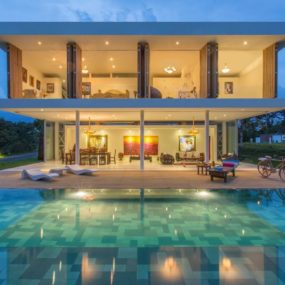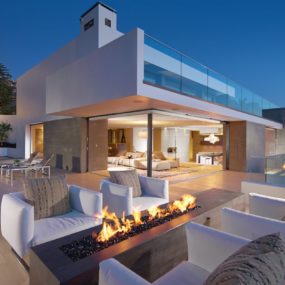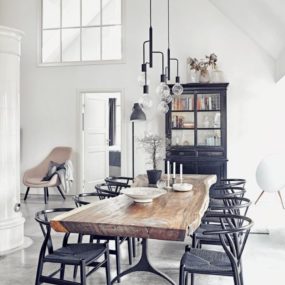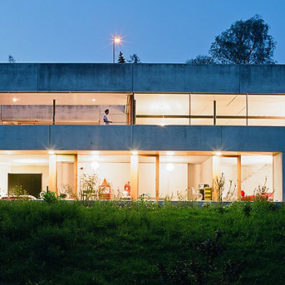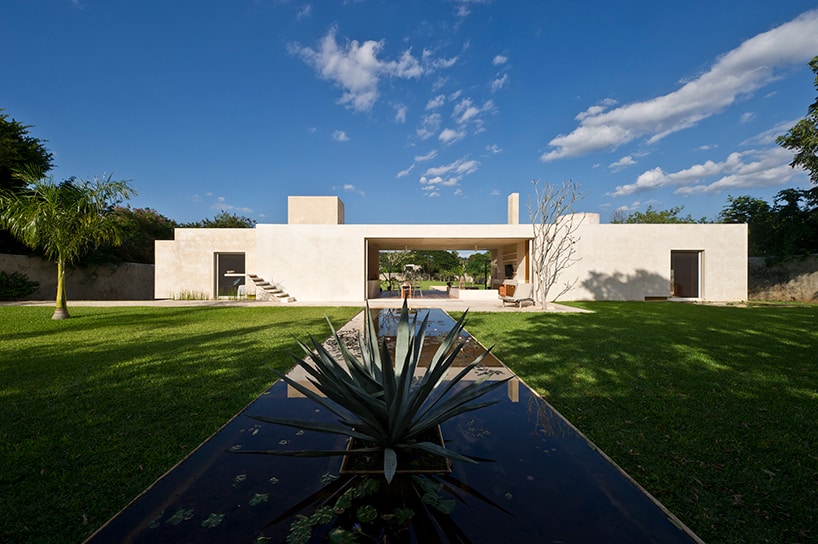
Mexican practice Reyes Rios + Larrain Studio have designed this award winning project as an individual guest house to an hacienda situated not far away, in the Yucatan peninsula. The new residence, called Casa Sisal, is situated on a 45 per 140 meters plot that had historically been cultivated with agave plants. Enclosed by old and thick masonry walls dating back to the late 17th century, the site is now nicely landscaped with carefully mowed lawns and a few rows of trees that create a pleasant natural environment. The building itself is set in the middle of the land, positioned transversely on it in order have nice views of the garden. The house is composed of two bedrooms with bathrooms, and open plan kitchen and living room. A cantilevering exterior staircase leads up to a rooftop terrace. There are exterior terraces on both sides of the central living area, that continue with a lap pool on one side, and a symmetrically positioned pond on the other side of the house. A unique feature of this building is the material it is entirely made of. This is a special white concrete that the architects have developed over the previous 15 years, and which is composed of white cement and resins from local Chukum trees, a technique inherited from the Mayas. The resulting material is ideal for indoor and outdoor finishes, but also for cast pieces. Thanks to the natural seal made by the resin components, the set concrete is very solid and resistant to extreme weather conditions.
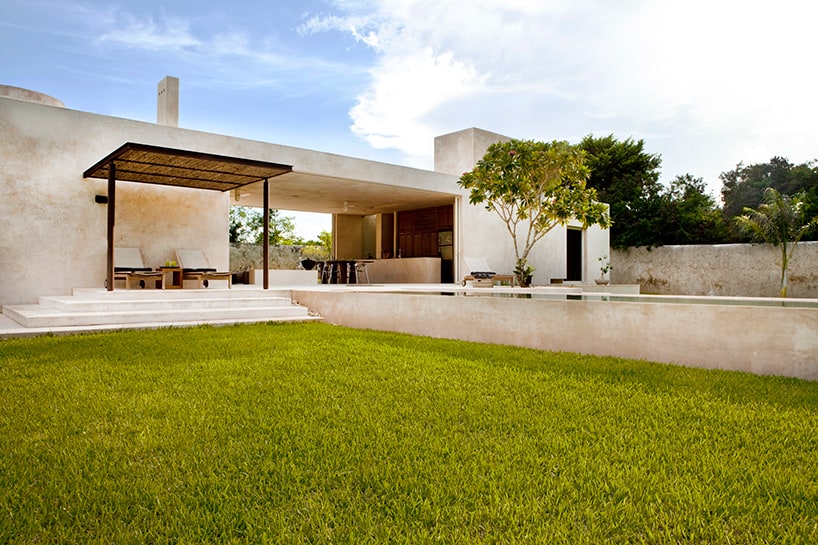
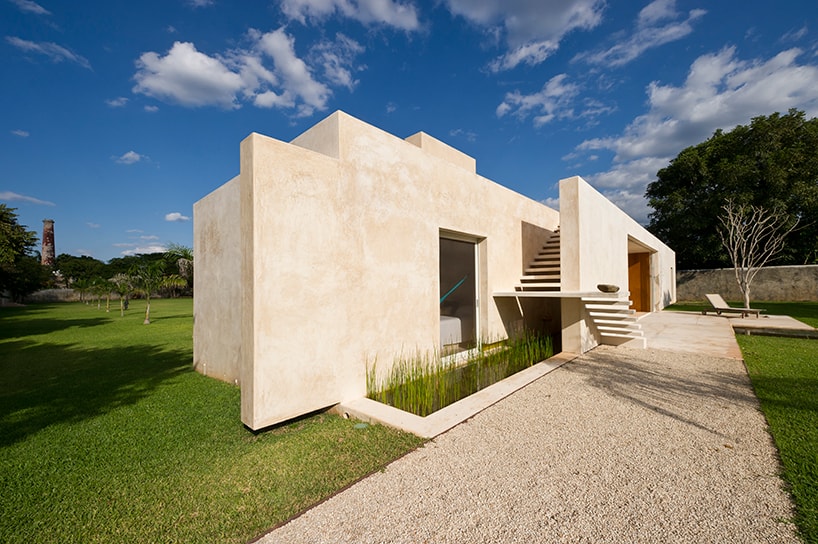
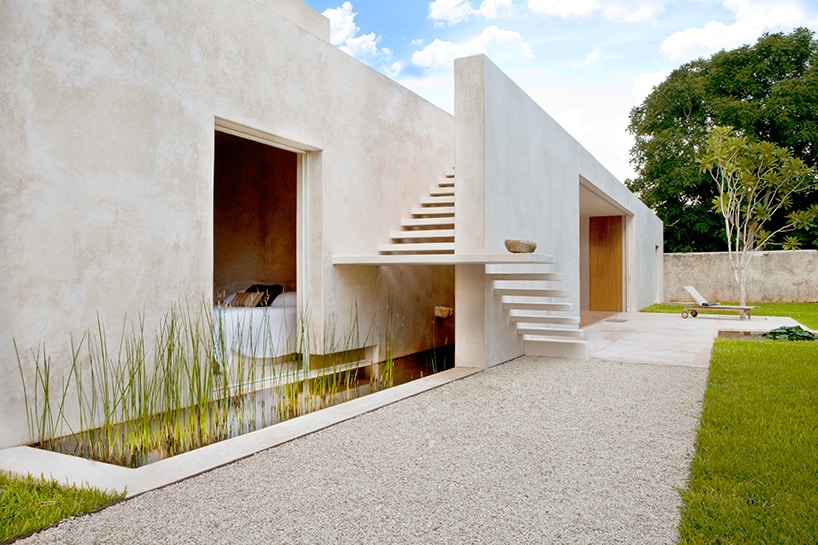
Made from the same material like the whole house, the cantilevering stairs seem to be magically growing out of the walls. This sensation is enhanced by the lack of visible joints between the wall and the stairs, one of the advantages of the special cement the building is made of.
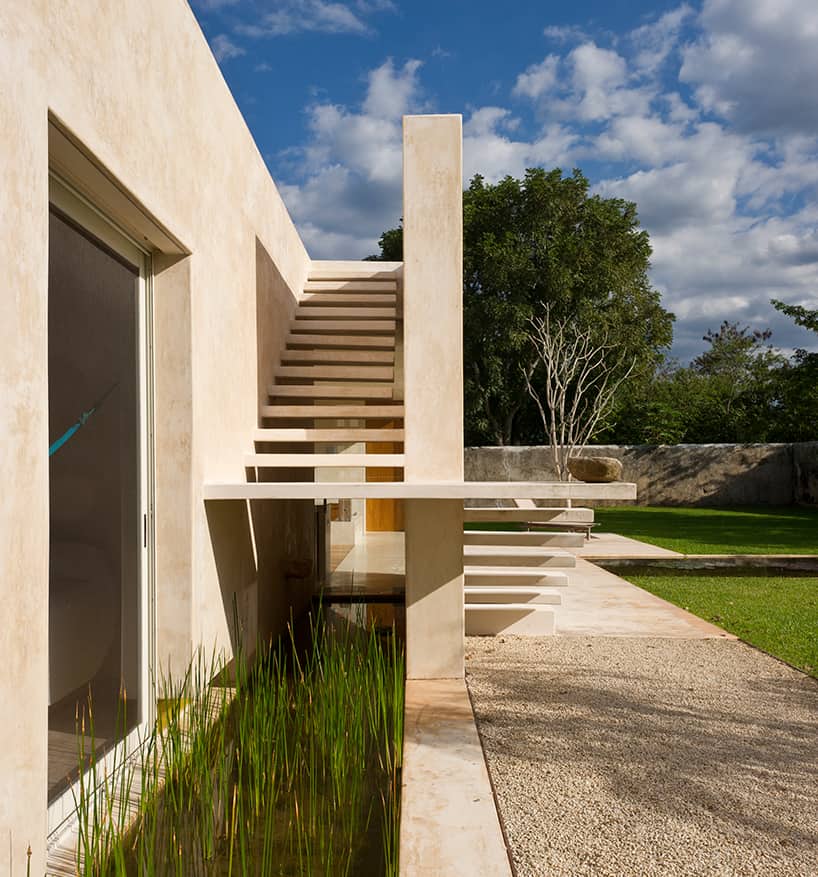

One of the most interesting features of the building is the design of the living area. Located in the middle of the house, the space is enclosed at the front and at the back by floor-to-ceiling glass doors that slide completely into the walls. When both sides are open, the living area looks like an outdoor lounge under a flat roof, which in its turn looks like a bridge connecting the two bedrooms.
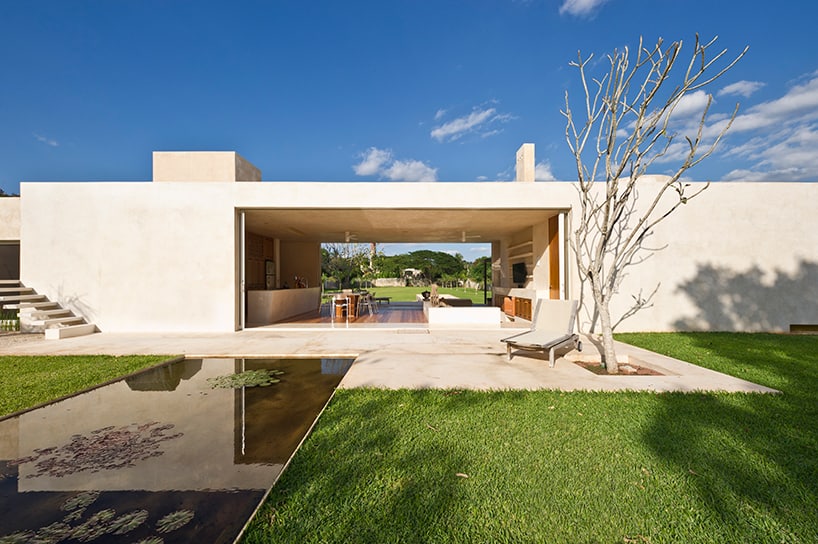

The floor of the living room is recessed compared to the level of the rest of the living area and the outside, like a small amphitheater. The poured cement stairs are used as a built-in base for the U-shaped sofa, made from seat mats, upholstered backrests and cushions. The sofa composition is oriented toward another built-in structure consisting of concrete shelves, storage cabinets, a fireplace and a flat screen.
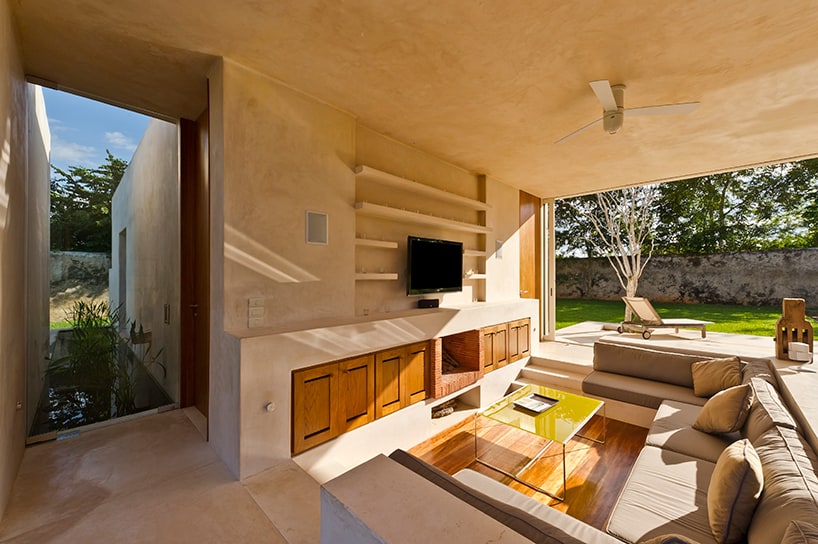
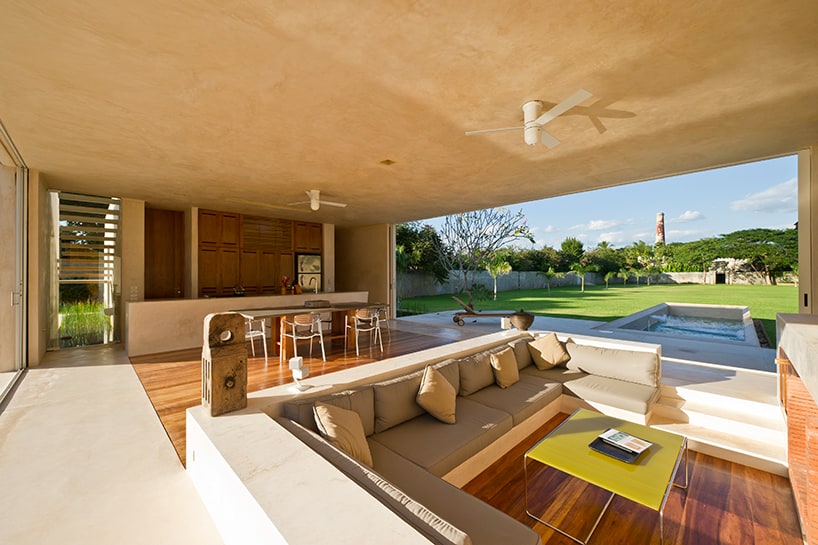
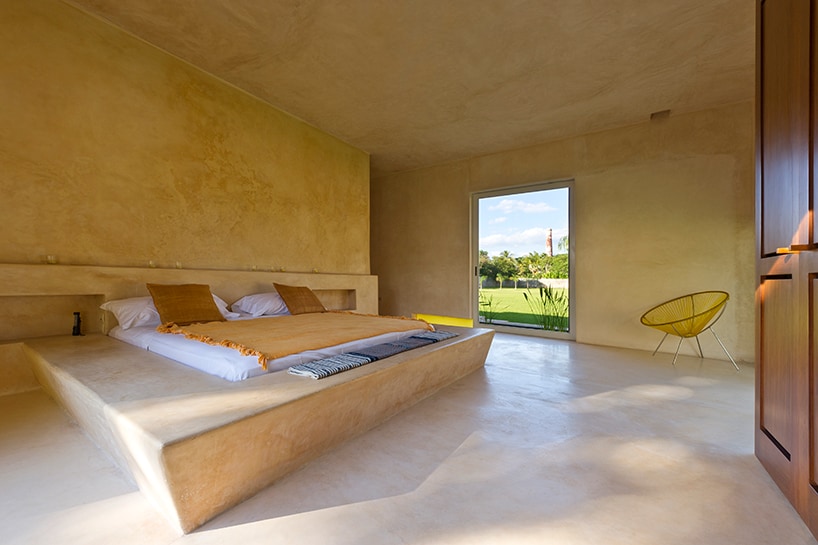
The architects have exploited to the maximum the qualities of their concrete by creating built-in beds and headboards in the two bedrooms. One of the bedrooms has a king size structure, while the other one has twin beds. The decoration is minimalistic and very zen. A hammock hangs from the walls in one bedroom, conveying a very relaxed, holidays atmosphere. Like the living room, the bedrooms also have facing windows at the front and at the back, but they are of smaller dimensions. Nevertheless they bring in light and sunshine at all times of the day, offering nice looks on the garden at the same time. Small ponds with aquatic vegetation are placed just outside these windows.



The bathrooms are completely finished in the same special concrete, that has the characteristic of being waterproof. The material allows also for the creation of built-in washbasins. In one of the bathrooms, the shower head is made from a wall hung natural looking stone, out of which the water falls down in real cascades.


